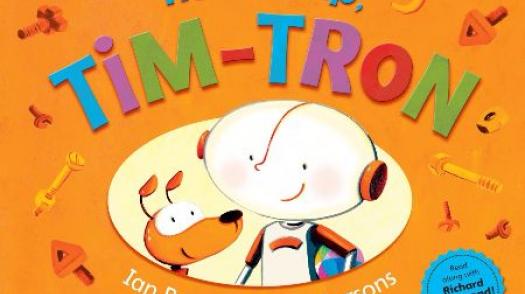This section explains some of the non-traumatic causes of acquired brain injury.1 To describe something as serious as acquired brain injury as ‘non-traumatic’ may seem strange to parents. But the term is used to divide ‘non-traumatic’ injuries from ‘traumatic’ injuries – those caused by a blow (or trauma) to the head. One way of thinking about it is to say a non-traumatic acquired brain injury is the result of things going on inside the body, such as a stroke or meningitis.
A traumatic brain injury (TBI) is when something happens outside the body, such as an impact to the head. One of our parents at The Children's Trust told us they feel non-traumatic brain injury is sometimes overlooked in information and articles about brain injury.
The truth is that non-traumatic acquired brain injury (ABI) may be just as common as traumatic, but we simply don’t know because non-traumatic acquired brain injury isn’t very well recorded.2
Whatever the truth of the situation, we’ve tried to offer information about some of the causes of non-traumatic acquired brain injury here.
There are many different causes of non-traumatic acquired brain injury, some of which are extremely rare. Some of the more common causes include infections, lack of oxygen, tumours and bleeding on the brain. It is worth keeping in mind that there may be some overlap in these causes of acquired brain injury. And sometimes, they can follow on from a traumatic brain injury.
Brain tumours
Tumours are growths inside the skull that can be either:
- Malignant
- Benign
Malignant, or cancerous tumours, grow quickly and spread to other areas of the brain and spine. Primary brain tumours are those that start in the brain, but tumours in the brain may follow on from cancers elsewhere in the body.
They can erode the healthy tissue in the brain, and can cause injuries by growing inside the enclosed space of the skull.
Benign tumours are non-cancerous. The reason these can cause an injury to the brain is because the skull is a small, enclosed space.
A tumour can put pressure on the brain and damage healthy tissue. Sometimes treatment can damage healthy tissue.
Meningitis3
We all have thin membranes that surround our brain and spinal cord. Meningitis is when these become inflamed (anything with ‘itis’ means that part of the body is inflamed). The inflammation is usually caused by an infection by a virus or bacteria.
Meningitis Now has lots of helpful information on meningitis, symptoms and advice.
Encephalitis3
There are a number of different types of encephalitis. It is when the brain tissue becomes inflamed, either because of an infection or through an ‘autoimmune condition’. These are conditions that make the immune system malfunction and attack healthy tissue.
It is a complex condition, but The Encephalitis Society has a great deal of information for anyone affected by it. Visit: www.encephalitis.info
Hypoxic/anoxic brain injury
Some acquired brain injuries happen when the brain doesn’t get enough of something it needs in order to function.
Hypoxic brain injury occurs where there isn't enough oxygen going to part of the brain.
Anoxic is when there is an absence of oxygen in a part of the brain.
The process of breathing carries oxygen around our bodies in our blood, so these kind of injuries can happen in any circumstances where breathing is affected.
This might be: near drowning3, a severe asthma attack, smoke inhalation, choking.
Other causes might be: heart problems, poisoning, inhalation of carbon dioxide.
You may hear a complete interruption of the supply of oxygen to the brain referred to as cerebral anoxia.
Stroke
Although rarer in children than in adults, stroke affects hundreds of children a year and can lead to an acquired brain injury. Many children who have a stroke already have another medical condition (such as difficulties with their heart or sickle cell disease).4
The brain needs blood in order to function properly. A stroke happens when the blood supply to the brain is cut off or interrupted for some reason. Without blood, the cells in the brain start to die, and this is when the injury occurs.
The Stroke Association’s website contains a lot of information on childhood stroke. This includes resources for young people, families and professionals; a toolkit for teachers and events for parents.
AVM, or arteriovenous malformation
This is where the blood vessels haven’t developed as they should. It’s thought to be something children are born with. They very rarely occur in the brain, but when they do, it means the veins may expand, causing them to split and bleed.
The result is a haemorrhage. Most people with an AVM don’t experience any symptoms until a haemorrhage happens. The shock can be very distressing for families.
An aneurysm
This happens when there is a bulge in a blood vessel in the brain because part of the wall is weak. The blood pressure causes this weakened part to bulge like a balloon. If it grows too big, it can burst and lead to blood leaking in the brain. The blood can cause brain damage and lead to a reduction in blood supply that may cause further damage.
Brain haemorrhage
A brain haemorrhage occurs when there is bleeding in or around the brain. This may have been caused by the impact of a traumatic brain injury (TBI). Or it may also be because an aneurysm has ruptured – see above. It may have been caused by an AVM (also above). There are different kinds of haemorrhage, depending on where around the brain the bleeding has occurred.
Our heads are made up of layers. It’s a little like the layers of the Earth, with the skull as the Earth’s crust. There are different protective layers beneath the skull before you reach the brain (or the Earth’s core).A haemorrhage can occur in any of these layers.
If the bleeding is on the brain itself, this is called a subarachnoid haemorrhage. This can be the cause of a stroke.
Other causes
There are some other non-traumatic causes of acquired brain injury (though we can’t list them all here).5:
- Asphyxiation/suffocation (which may occur after the inhalation of smoke in a fire)
- A surgical procedure, particularly cardiac surgery, and the removal of brain tumours
- Prolonged epilepticus (when an epileptic convulsion lasts more than 60 minutes)
- As a complication of diabetes.


